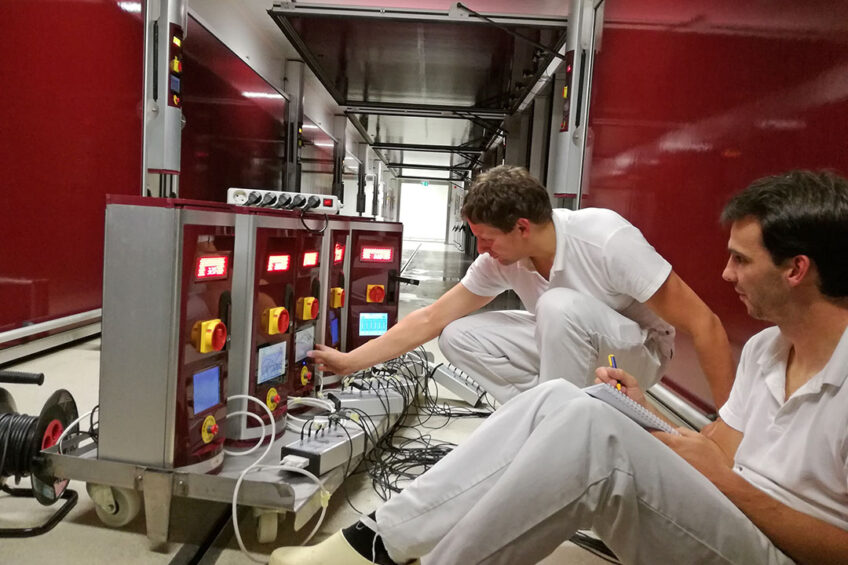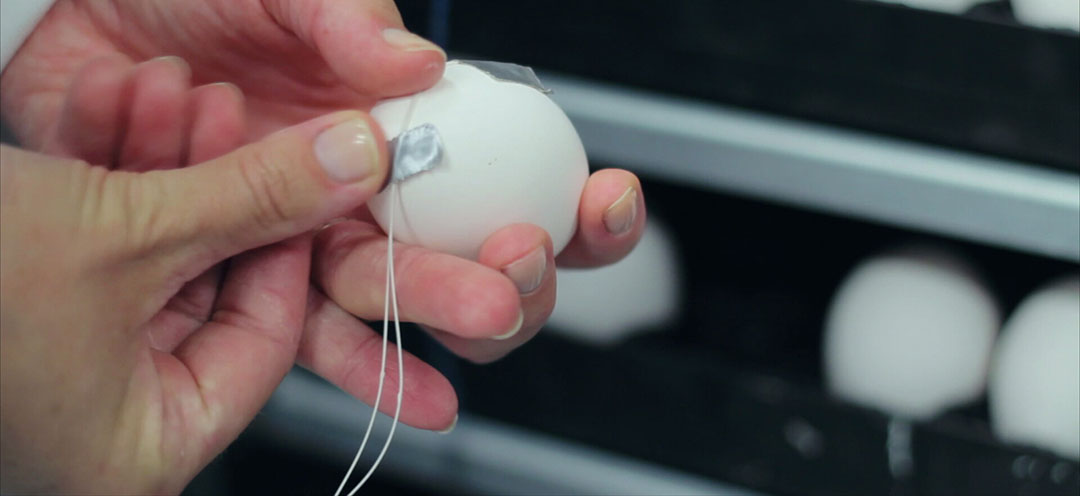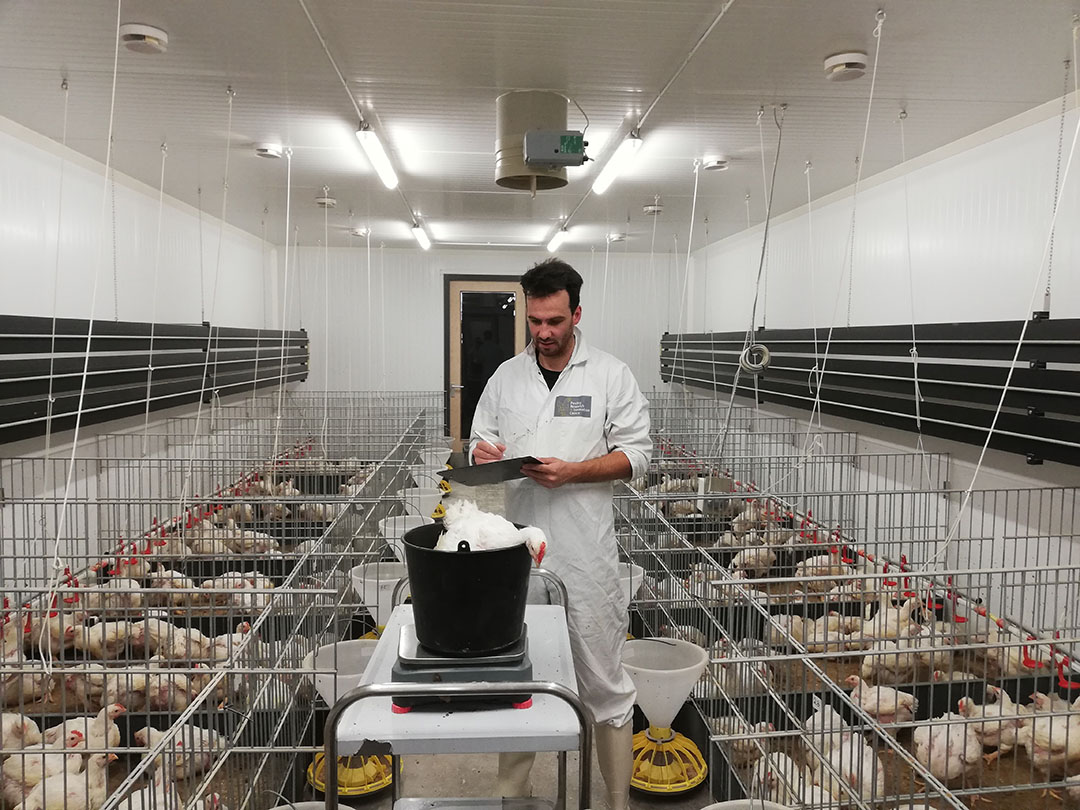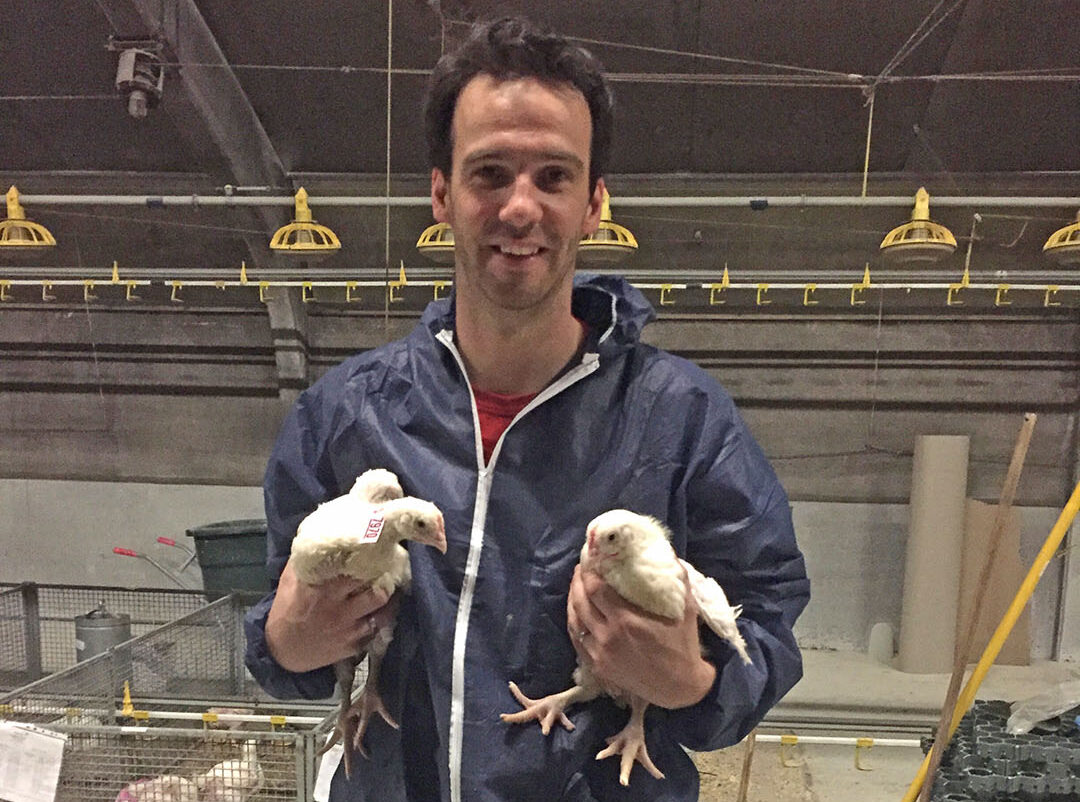100°F is where the magic happens in the hatchery

It is well known that the hatchery plays an important role in neonatal chick quality and first-week poultry performance. But what about the long-term effects of incubation? For instance, what role does incubation play in susceptibility to diseases? Dr Jan Wijnen put these thoughts to the test for his PhD thesis at Wageningen University and saw some interesting results on how perinatal factors can affect later-life broiler resilience to infectious diseases, such as necrotic enteritis and colibacillosis. Most significantly, Wijnen reaffirmed the importance of maintaining eggshell temperature at a 100°F (37.78°C) throughout incubation.
The increasing global concern about rising antimicrobial resistance has led to a growing interest in alternative approaches to preventing and controlling infectious diseases. One approach is to enhance animal resilience. Wijnen defines resilience as the ability of an animal to cope with environmental disruptions, such as infectious diseases, and reorganise with a minimal loss of function.
Resilience to infectious diseases can be studied by measuring 3 complementary aspects: resistance to becoming infected, tolerance during infection, and recovery from the infection. “The vast majority of animal health research focuses on only 1 of these 3 aspects, whereas all 3 of them need to be included to draw sound conclusions on the actual ability to cope with diseases. In my research, I looked at overall poultry resilience to intestinal and respiratory diseases instead,” says Wijnen.
“It’s intriguing that relatively small deviations in eggshell temperature during incubation can have a tremendous impact on later life disease resilience.”
Wijnen: “Optimal early life conditions can have long-lasting effects and may, therefore, also support poultry resilience. Remarkably, the effects of early life conditions on resilience against infectious diseases in broilers were largely unknown until now. Firstly, incubation temperature may affect broiler resilience in later life as it also affects embryo development, neonatal chick quality and growth performance in later life.”
Wijnen took a deep dive into eggshell temperature during incubation. “Until now, a constant eggshell temperature (EST) of 100°F was considered optimal. However, other researchers found indications that a higher EST of 102°F (38.89°C) during mid-incubation, as well as a lower EST of 98°F (36.67°C) during late incubation, may optimise embryo and chick development. Therefore, we hypothesised that these alternative temperature patterns would enhance later life broiler resilience.”
Secondly, the moment of first access to feed and water after hatch was hypothesised to affect broiler resilience in later life. In practice, broiler chicks either have access to feed, and water directly after hatch (‘early feeding’) or access to feed and water is delayed until placement at the growing facility (‘delayed feeding’).
“We knew already that a post-hatch feeding strategy can alter immune responses and growth performance up to slaughter age. But whether it affected broiler resilience to infectious diseases was largely unknown,” says Wijnen. “Furthermore, the interaction between incubation temperature and post-hatch feeding strategy had never been investigated until now. We hypothesised that an optimal EST pattern combined with early feeding would result in best broiler resilience in later life.”

Experiments
Experiment 1 investigated the effects of alternative EST patterns on chick characteristics at hatch, especially immune organ development, later life immune responses and growth performance. The results of this study did not show significant effects on the vast majority of chick characteristics or growth performance.
“A lower late EST resulted in lower growth performance until slaughter age, but this was probably the result of the delayed hatch moment and, consequently, less time to grow rather than impaired growth performance.”
Wijnen continues: “Considering the immune system, a higher mid-EST and a lower late EST each resulted in significantly different morphology of the bursa at hatch compared to the control EST, as well as a different blood leukocyte profile. Newcastle disease titer at slaughter age was also higher for a higher mid-EST compared to the control EST. Furthermore, a tendency towards increased mortality during the total rearing period was found for a lower late EST compared to a control EST. So, indications were found that incubation temperature could affect broilers’ later life and their immune system, but the effects on disease resilience remained unknown so far.”
Because no interaction was shown between a higher mid and a lower late EST, the effects of these were tested separately in 2 follow-up experiments, with a post-hatch feeding strategy included.
Experiment 2 investigated a lower late incubation temperature, post-hatch feeding strategy (early or 48 hours delayed), and the interaction between them in terms of resilience to necrotic enteritis over a period of 4 weeks of age.
Wijnen explains: “Necrotic enteritis was induced by oral inoculation with Eimeria spp. and Clostridium perfringens. Mortality and individual body weights were measured daily for 2 weeks after inoculation, oocysts in faeces were determined (OPG), and disease morbidity was assessed on days 28 and 29. No interaction between EST and post-hatch feeding strategy was found regarding disease resilience. A lower late EST reduced resilience to necrotic enteritis compared to the control EST, expressed as higher losses in ADG and higher OPG. Early feeding tended to enhance resilience to necrotic enteritis compared to delayed feeding, expressed by a lower mortality rate. Disease morbidity, expressed by intestinal lesions at days 28 and 29, was not affected by EST or post-hatch feeding strategy.”

Experiment 3 investigated the effects of a higher mid-incubation temperature, post-hatch feeding strategy and the interaction between them in relation to broiler resilience to colibacillosis. Colibacillosis was induced at 8 days of age. Body weights were measured daily for 13 days, morbidity was evaluated at 6 moments post-E. coli inoculation, and mortality was noted daily.
Results showed that a higher mid-EST reduced the probability of surviving colibacillosis. Furthermore, early feeding resulted in a lower incidence of local infection, lower daily body weight losses and higher growth performance until slaughter. Additionally, an interaction between EST and post-hatch feeding strategy was found for systemic infections.
At a higher mid-EST, early feeding resulted in a greater incidence but not the severity of systemic infections, expressed by a higher percentage of broilers with E. coli in blood and lesions in the liver and/or pericardium. At control EST, systemic infection was not affected by feeding strategy, and the severity of the total mean lesions score was lower for early compared to delayed feeding.
To summarise, a higher mid-EST seems to impair embryo development. This can negatively affect the beneficial effects of early feeding on broiler resilience which is found when incubated at control EST.
Dr Wijnen also investigated which biological mechanisms could explain the findings. “Unfortunately, our study did not provide an answer. Perhaps it has something to do with stress as we found higher corticosterone levels in delayed-fed chicks. Stress can have a negative impact on the immune system. However, we did not find lasting differences in stress response between the treatment groups. It could also have something to do with nutrient metabolism, trained immunity, thermoregulatory capacity, or something completely different. In short, we really don’t know yet, and research with a more fundamental approach is needed to investigate why exactly these perinatal conditions affect later life broiler resilience to infectious diseases.”

Constant temperature
Wijnen concludes: “Both a higher mid-EST and a lower late EST result in a reduced resilience to infectious diseases in broilers compared to a constant 100°F (37.78°C) EST. Contrary to what we hypothesised, these alternative EST patterns probably impair embryo development. Furthermore, this worse embryo development can negatively impact the effect that post-hatch feeding strategy has on broiler resilience.”
He continued to say that suboptimal EST in combination with early feeding can increase the risk of systemic infections, while generally, early-fed broilers show greater resilience to infectious diseases compared to 48-hour delayed-fed broilers. “It’s intriguing that relatively small deviations in eggshell temperature during incubation (2°F) can have a tremendous impact on later life disease resilience. The most important takeaway for hatcheries is that it is imperative to maintain the currently targeted 100°F (37.78°C) eggshell temperature from start to finish. It is essential for the success of broilers. A constant 100°F (37.78°C) eggshell temperature: that’s where the magic happens.”









